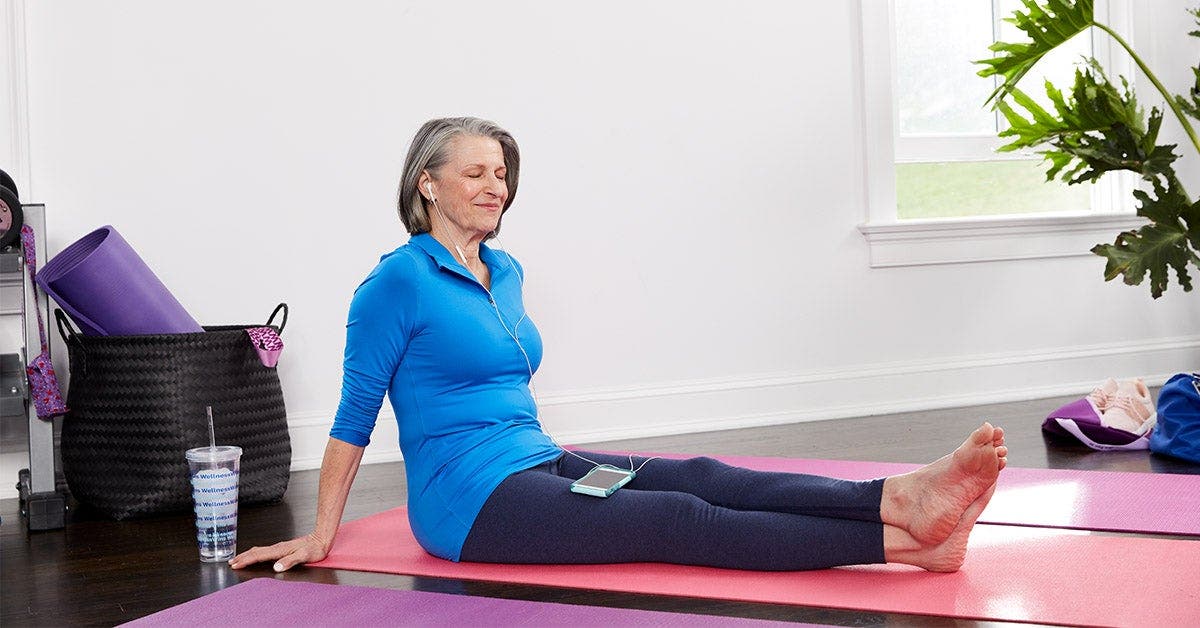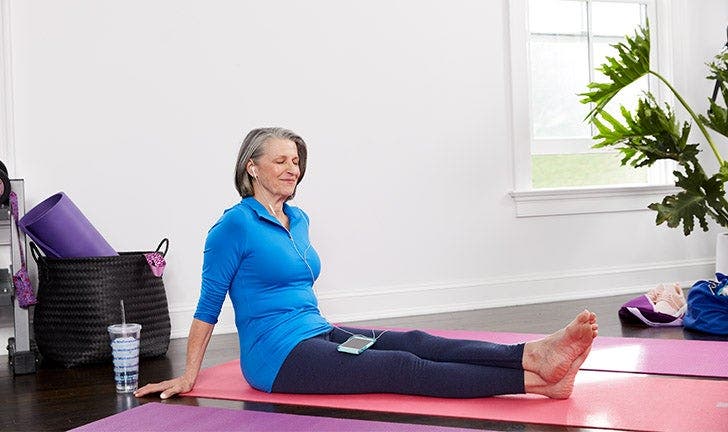Exercising With Limited Mobility


The idea of exercising when you are faced with limited mobility, whether due to age, disability or injury, can be daunting to say the least. But exercise doesn’t have to be taken off the table – it’s just a matter of figuring out a routine that works for you and your level of ability.
It’s important to talk to your doctor about your fitness level and what your body is ready for, so you don’t risk injuring yourself, and meeting with a personal trainer can also help you plan a routine that’s personalized for your abilities and goals.
For some general advice on exercising with limited mobility, we asked a few experts for their thoughts.
“For beginners, [those who have been] recently injured and cleared for activity, and the elderly, the first and most important step is to work on stability and mobility,” says personal trainer Rachel MacPherson. “Without a stable base or the mobility needed to move in proper ranges of motion, any type of more advanced exercise could be dangerous.”
MacPherson recommends using a recumbent bike to get some cardiovascular activity without straining the joints or the back. Other exercises she recommends include:
- Chair balance, one limb raise: Standing behind a chair, brace your core, lift one foot off the floor while using the chair for balance. Perform two sets of five repetitions (reps) for each leg.
- Rock the boat: Standing with legs slightly wider than hip-width apart, using a chair for balance if necessary, brace your core, sway side to side, lifting one foot at the end of the motion. Do two sets of 10 reps (one rep = right and left motion).
- Clock reach: Stand on left leg, lift right leg one inch off the floor and reach right arm to 12 o’clock, 9 o’clock, behind you to 6 o’clock, and across you to 3 o’clock. Repeat on the other side. Do two sets of five on each side.
- Leg abduction: Brace the core, contract the standing leg, lift other leg out to the side. Stay upright. Use a chair for balance if needed. Keep the movement slow and controlled and reach as far as you can. Complete two sets of 10 on each side.
- March in place: Brace your core, hold onto a chair and march in a straight line. Keep your spine straight. Lift the knees higher than you would in a normal walk. If possible, release your hands and swing your arms. Complete two sets of 30 to 60 seconds.
Rachel Fiske, NC, CPT-NASM, who serves on the advisory board for Smart Healthy Living, recommends low-impact activities such as yoga, tai chi, qigong, and water aerobics as well.
“For strength training, light bodyweight exercises or using light dumbbells is a good place to start, especially incorporating functional movements like squats (or sit-to-stands using a chair) and focusing more on upper body strengthening exercises, especially if you need to be seated.”
She says some helpful tools for resistance training include a resistance band – which lets you choose how much resistance is appropriate for your body – ankle or wrist weights, light dumbbells, and an armless chair so you can be seated while doing arm exercises.
Balance exercises, such as standing on one leg at a time, are also beneficial, and Fiske recommends performing them with assistance if needed.
For some advice on exercise specific to seniors, we turned to someone who wrote a book all about it.
“When I turned 70, I was in such terrible shape that I knew I wouldn’t be able to enjoy my remaining years if I didn’t do something to get fit,” says James P. Owen, inspirational speaker and author of Just Move! A New Approach to Fitness After 50. “I soon realized that millions of baby boomers were in the same fix, but believed they were ‘too old’ to get fit or had no clue how to get started.”
“Just move” sounds so simple, but for many of us it can be difficult to get started if we haven’t exercised in a long time, are dealing with a disability or are recovering from an injury.
“While the same basic fitness principles apply to any age group, I’m the first to say that it’s different when you’re older,” says Owen. He offers these three pointers for people who have been inactive for a while and want to get in better shape.
- Ease into it: Owen recommends walking and stretching several times a week. “Walking is the most natural and universal exercise there is. It’s low-intensity, simple and sustainable. Plus, it’s free!” When you begin, he says the idea is to loosen up your body and get used to being more active and building a fitness habit – don’t worry about how far or how fast you go. “If you simply walk and stretch, working up to five or six days a week, you will be amazed how much better you look and feel in just a few weeks.”
- Target small steps rather than big leaps: “Too often, people try to ‘turn over a new leaf’ with a radical lifestyle makeover. But that’s a recipe for failure, because it’s just not sustainable,” Owen says.
- Focus on what you can do, not what you can’t: “… don’t let your age, your body type or even your physical condition hold you back,” Owen says. “As long as you have some degree of mobility, you can become more fit. The key is mindset – a ‘can-do’ attitude applied to small goals. If you’re willing to give it a little bit of effort, ‘I think I can do this’ leads to ‘I can do this’ and, in your next exercise session, ‘I will do this.’ Once you start seeing and feeling the results, you naturally start thinking, ‘what else can I do?’”
In general, for those working on their fitness after the age of 50, Owen has three top tips:
- Include some kind of strength training in your workouts
- Keep progressing
- Make it social and fun
“Fitness isn’t a destination; it’s a way of life,” Owen concludes. “But that doesn’t mean it has to be complicated. Any kind of regular activity, combined with a few basic exercises and sensible eating habits, will go a long way toward keeping you functional and pain-free. You’ll feel better and have more energy, too. I promise, your body will thank you!”
